Text

Join 4/6 Weeks Summer Training in Noida | 4/6 Weeks Summer Internship
0 notes
Text

How to Become a Full Stack Developer with a non-technical background
#Full stack developer#Web development#Front-end development#Back-end development#full stack development course#full stack certification#learn full stack development#full stack developer course
0 notes
Text

Corporate Training | Organizational Training Program | Employees Training - KVCH
#corporate training#employee training and development#corporate training courses#corporate training program#corporate training company
0 notes
Text

Cloud Computing Certification Training| KVCH training
0 notes
Text
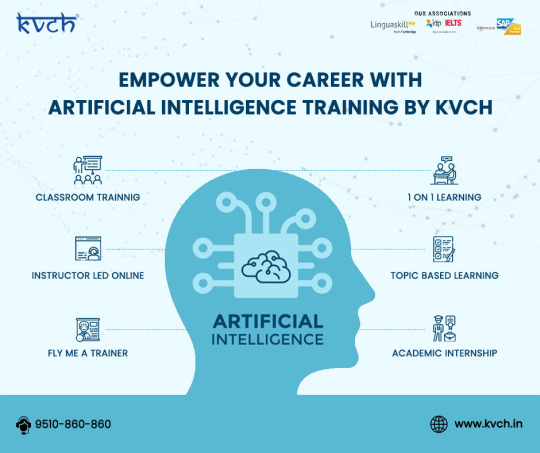
Artificial Intelligence Training Certification| AI Training Program
#artificial intelligence training#ai certification course#best artificial intelligence course#artificial intelligence certification
0 notes
Text

Machine learning certification| Best machine learning training
#best machine learning course#machine learning certification#Machine learning training#machine learning training in noida#machine learning course online
0 notes
Text
Revolutionizing Healthcare: How SISGAIN's Android App Development is Changing Remote Patient Monitoring for the Better
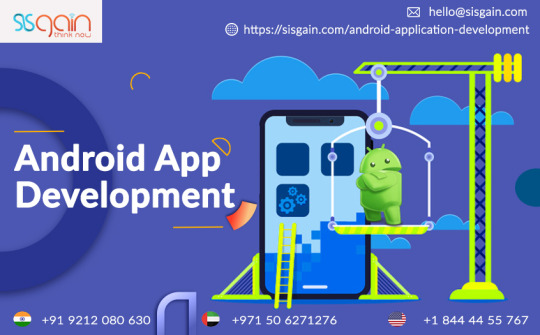
Remote Patient Monitoring (RPM) is becoming increasingly popular in the healthcare industry, and for good reason. It has the potential to provide a number of benefits to patients, healthcare providers, and the healthcare system as a whole. One company that has been at the forefront of developing RPM solutions is SISGAIN, an android app development agency that specializes in developing healthcare applications. In this blog post, we will discuss the benefits of RPM and how SISGAIN is contributing to the field through its android app development services.
Improved Patient Outcomes
One of the biggest benefits of RPM is the potential to improve patient outcomes. By allowing healthcare providers to monitor patients remotely, they can detect changes in the patient's condition early on, which can lead to earlier interventions and better outcomes. This is particularly important for patients with chronic conditions, who may require regular monitoring to ensure that their condition is well-managed. With RPM, patients can receive care in the comfort of their own homes, without having to make frequent trips to the hospital or clinic.
Reduced Healthcare Costs
Another significant benefit of RPM is the potential to reduce healthcare costs. By reducing the need for hospital admissions and readmissions, RPM can help to reduce the overall cost of healthcare. In addition, RPM can help to reduce the cost of care for patients with chronic conditions, who may require regular monitoring and care. By providing care remotely, healthcare providers can reduce the cost of staffing and equipment required for in-person care.
Increased Patient Satisfaction
RPM can also lead to increased patient satisfaction. Patients often prefer to receive care in the comfort of their own homes, rather than in a hospital or clinic. With RPM, patients can receive care remotely, which can lead to increased satisfaction and better patient engagement. In addition, RPM can help to reduce the burden on caregivers, who may be responsible for providing care to their loved ones.
SISGAIN's Contributions to RPM
SISGAIN is an android app development company that has been developing healthcare applications for over a decade. They have been at the forefront of developing RPM solutions, using their expertise in android app development to create innovative solutions for healthcare providers. SISGAIN's RPM solutions are designed to be user-friendly and accessible, making it easy for patients to receive care remotely.
SISGAIN's Android developers have expertise in developing RPM solutions that are compatible with a wide range of devices, including smartphones, tablets, and wearable devices. This allows patients to receive care using the devices that are most convenient for them. SISGAIN's RPM solutions are also designed to be secure and HIPAA-compliant, ensuring that patient data is protected at all times.
Conclusion
In conclusion, RPM is a powerful tool that has the potential to provide a number of benefits to patients, healthcare providers, and the healthcare system as a whole. By improving patient outcomes, reducing healthcare costs, and increasing patient satisfaction, RPM is poised to become an important part of the healthcare landscape. SISGAIN is an android app development agency that is at the forefront of developing RPM solutions, using its expertise in android app development to create innovative solutions for healthcare providers. With their user-friendly, secure, and HIPAA-compliant RPM solutions, SISGAIN is helping to revolutionize the way healthcare is delivered.
#android app development#android app development company#Android developers#android app development agency
0 notes
Text
future of virtual care and its impact on the Healthcare Industry
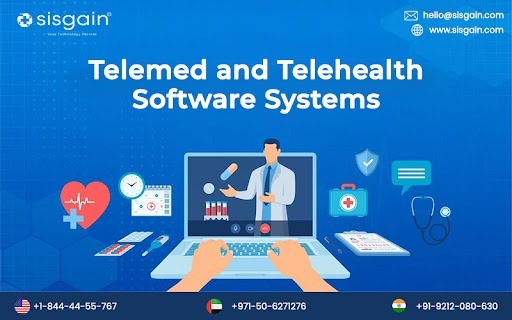
The healthcare industry has undergone a major transformation in recent years, with the rise of telehealth technologies and virtual care. Telehealth apps and telehealth software have become increasingly popular, providing patients with access to healthcare services from the comfort of their own homes. One company that has been at the forefront of this trend is SISGAIN, a leading telehealth app development company. In this blog post, we will explore the future of virtual care and its impact on the healthcare industry, focusing on the role of telehealth software companies like SISGAIN.
Telehealth software has the potential to revolutionize the way healthcare is delivered, by providing patients with convenient access to healthcare services, regardless of their location. This can be particularly beneficial for patients who live in rural or remote areas, and who may struggle to access traditional healthcare services. Telehealth software can also help to reduce costs and improve efficiency, by enabling healthcare providers to deliver care remotely.
The COVID-19 pandemic has accelerated the adoption of telehealth technologies, as healthcare providers have had to find new ways to deliver care while minimizing the risk of infection. As a result, telehealth app development has become a top priority for many healthcare organizations. Telehealth software companies like SISGAIN have been working hard to develop new telehealth apps and software solutions that can help healthcare providers to deliver care remotely.
One of the key advantages of telehealth software is its ability to improve access to healthcare services. Patients can use telehealth apps to connect with healthcare providers from anywhere, at any time. This can be particularly beneficial for patients who live in areas with a shortage of healthcare providers, or for those who have mobility or transportation issues. Telehealth software can also help to reduce wait times for appointments, by enabling patients to see a healthcare provider more quickly.
Telehealth software can also help to reduce costs, by enabling healthcare providers to deliver care more efficiently. For example, telehealth software can be used to conduct remote consultations, reducing the need for in-person visits. This can help to reduce the cost of healthcare delivery, while also improving patient outcomes.
Telehealth software can also help to improve patient outcomes, by enabling healthcare providers to monitor patients remotely. For example, telehealth software can be used to monitor patients with chronic conditions, such as diabetes or heart disease. This can help healthcare providers to detect potential health problems early, and to intervene before they become more serious.
As the demand for telehealth services continues to grow, so too does the need for telehealth app development. Telehealth software companies like SISGAIN are playing an increasingly important role in the development of telehealth apps and software solutions. These companies are working to develop new technologies and applications that can help healthcare providers to deliver care remotely, while also improving patient outcomes.
One of the key challenges facing telehealth software companies is the need to ensure that their products are secure and compliant with regulations. Telehealth software must comply with strict privacy and security regulations, to ensure that patient data is protected at all times. Telehealth software companies must also ensure that their products are user-friendly and accessible to patients of all ages and abilities.
Despite these challenges, the future of telehealth software looks bright. As the healthcare industry continues to evolve, telehealth software will play an increasingly important role in the delivery of healthcare services. Telehealth software companies like SISGAIN will continue to develop innovative new solutions, to help healthcare providers to deliver care remotely, while also improving patient outcomes.
In conclusion, the future of virtual care is bright, thanks to the development of telehealth software and telehealth apps. These technologies have the potential to revolutionize the way healthcare is delivered, by improving access to healthcare services, reducing costs, and improving patient outcomes. Telehealth software companies like SISGAIN are playing an increasingly important role in the development
#telehealth app#telehealth software#telehealth app development#telehealth software companies#telehealth app development company
0 notes
Text
5 Best Practices for Creating Rock-Solid HL7 Interfaces: A Look into Sisgain's Approach

Sisgain is a leading healthcare software development company that specializes in creating robust HL7 interfaces. With a team of experienced developers and a deep understanding of healthcare industry standards, Sisgain is well-equipped to help healthcare organizations build high-quality, secure, and reliable HL7 interfaces. In this blog post, we'll explore five best practices for building robust HL7 interfaces, using Sisgain as a case study.
Understanding HL7 Standards
One of the key best practices for building robust HL7 interfaces is to have a thorough understanding of HL7 standards. HL7 is a messaging standard that is widely used in the healthcare industry to facilitate the exchange of clinical data between different systems. HL7 interfaces are critical to the smooth operation of healthcare organizations, as they allow disparate systems to communicate with each other seamlessly. As an HL7 interface developer, it is essential to have a solid grasp of the HL7 standard, as well as related standards such as FHIR and DICOM.
Sisgain understands the importance of HL7 standards and has invested heavily in developing expertise in this area. Their developers are well-versed in the nuances of HL7 and are able to create interfaces that adhere to the standard while still meeting the specific needs of each client.
Defining Interface Requirements
Another important best practice for building robust HL7 interfaces is to define clear and comprehensive interface requirements. This includes identifying the specific data elements that need to be exchanged between systems, as well as any requirements for message routing, error handling, and security.
Sisgain takes a collaborative approach to interface development, working closely with clients to ensure that all interface requirements are clearly defined and documented. This helps to ensure that the resulting interface is robust, secure and meets the needs of all stakeholders.
Designing for Scalability and Flexibility
HL7 interfaces are often required to handle large volumes of data and may need to accommodate changing requirements over time. As such, it's important to design interfaces that are scalable and flexible. This includes implementing strategies such as message queuing, load balancing, and modular architecture.
Sisgain has extensive experience designing HL7 interfaces that are both scalable and flexible. Their developers understand the importance of building interfaces that can handle high volumes of data and have implemented a range of strategies to ensure that their interfaces are both robust and flexible.
Testing and Validation
Testing and validation are critical components of any interface development project. HL7 interfaces are particularly complex and must be thoroughly tested to ensure that they function correctly under a range of scenarios.
Sisgain has a rigorous testing and validation process in place for all HL7 interfaces that they develop. Their developers use a range of tools and techniques to simulate real-world scenarios and ensure that the interface functions correctly under a variety of conditions. This helps to ensure that the interface is reliable, and secure and meets the needs of all stakeholders.
Monitoring and Maintenance
HL7 interfaces must be monitored and maintained on an ongoing basis to ensure that they continue to function correctly over time. This includes monitoring performance metrics, detecting and resolving errors, and implementing updates and upgrades as needed.
Sisgain takes a proactive approach to monitor and maintenance, with a dedicated team of developers who are responsible for monitoring interfaces and addressing any issues that arise. This helps to ensure that interfaces remain reliable, secure, and up-to-date.
Conclusion
Building robust HL7 interfaces is a complex process that requires a deep understanding of healthcare industry standards, as well as expertise in software development and interface design. Sisgain is a leading healthcare software development company that has extensive experience in developing HL7 interfaces that are robust, secure, and meet the needs of healthcare organizations. By following best practices such as understanding HL7 standards, defining interface requirements, designing for scalability and flexibility,
0 notes
Text
Revolutionizing Healthcare: 5 Key Benefits of EHR Integrations with Sisgain's Innovative Solution

In today's digital age, the use of electronic health records (EHRs) has become increasingly prevalent in the healthcare industry. However, with the sheer volume of patient data and the need to integrate with other healthcare technology solutions, the implementation of EHR software alone may not be enough to meet the demands of healthcare providers. That's where EHR integrations come into play.
EHR integrations refer to the process of connecting EHR software with other healthcare technology solutions, such as practice management software or telemedicine platforms. In this blog post, we'll explore the five key benefits of EHR integrations for healthcare providers, and how Sisgain, a leading healthcare technology company, is helping to drive innovation in this space.
Enhanced Data Accessibility and Sharing
One of the main benefits of EHR integrations is that it allows healthcare providers to access and share patient data across different systems, enabling better collaboration and coordination of care. With EHR integrations, patient data can be easily accessed and updated in real-time, reducing the risk of errors and duplication. This not only saves time, but it can also improve patient outcomes and satisfaction.
Sisgain's EHR software development services are designed to provide healthcare providers with customized EHR integrations that streamline workflows and facilitate better collaboration between providers, patients, and other stakeholders.
Improved Efficiency and Productivity
Another key benefit of EHR integrations is that it can significantly improve efficiency and productivity in healthcare organizations. By automating manual processes and eliminating the need for duplicate data entry, healthcare providers can save time and reduce administrative burdens. EHR integrations can also improve patient flow, as providers can easily access patient data and coordinate care across different departments and specialties.
Sisgain's medical records software solutions are designed to help healthcare providers optimize their workflows and maximize efficiency. By leveraging cutting-edge technology and advanced analytics, Sisgain's medical records software can help healthcare providers streamline their operations and improve patient care.
Better Patient Engagement and Satisfaction
EHR integrations can also help healthcare providers improve patient engagement and satisfaction by providing patients with better access to their health information. With EHR integrations, patients can access their medical records and communicate with their providers through secure portals or mobile apps. This can help patients stay informed and engaged in their care, which can ultimately lead to better health outcomes.
Sisgain's EHR software development services include patient engagement solutions that enable healthcare providers to connect with patients in real-time through secure portals or mobile apps. By leveraging Sisgain's patient engagement solutions, healthcare providers can improve patient satisfaction and loyalty.
Enhanced Data Security and Privacy
Data security and privacy are major concerns for healthcare providers, as patient data is highly sensitive and must be protected at all times. EHR integrations can help healthcare providers ensure that patient data is secure and compliant with HIPAA regulations by implementing advanced security features such as encryption and access controls.
Sisgain's EMR software solutions are designed to provide healthcare providers with advanced security features that help protect patient data from unauthorized access or breaches. With Sisgain's EMR software, healthcare providers can rest assured that their patient data is secure and compliant with industry regulations.
Cost Savings and ROI
Finally, EHR integrations can help healthcare providers reduce costs and improve their return on investment (ROI) by streamlining workflows, reducing administrative burden, and improving patient outcomes. By implementing EHR integrations, healthcare providers can save time and money on manual processes, while improving the quality of care they provide.
Sisgain's healthcare technology solutions are designed to help healthcare providers maximize their ROI by providing customized EHR integrations and other advanced solutions that help improve patient care, streamline workflows, and reduce costs.
0 notes
Text
5 Ways Telemedicine is Revolutionizing Healthcare in the 21st Century
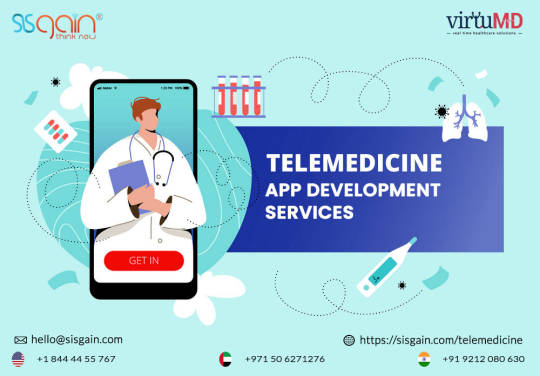
Telemedicine has been gaining increasing attention in the healthcare industry as a result of the COVID-19 pandemic. Many healthcare providers are turning to telemedicine to deliver care to their patients in a safe and efficient manner. The benefits of telemedicine are numerous and varied, and it is quickly becoming an essential part of modern healthcare. In this blog post, we will explore 5 ways telemedicine is revolutionizing healthcare in the 21st century and how companies like Sisgain are helping to drive this transformation through their telemedicine app and software development services.
Improved Access to Healthcare
One of the most significant ways telemedicine is revolutionizing healthcare is by improving access to care. Telemedicine eliminates the need for patients to physically travel to a healthcare facility, which can be especially beneficial for those who live in rural areas or have limited mobility. Telemedicine also allows healthcare providers to reach patients who may not have access to care due to distance, time constraints, or other factors. Companies like Sisgain are helping to facilitate this improved access to care by offering telemedicine app development services that enable healthcare providers to offer virtual consultations, remote monitoring, and other telemedicine services.
Increased Patient Engagement
Another way telemedicine is revolutionizing healthcare is by increasing patient engagement. With telemedicine, patients can take a more active role in their own healthcare by accessing health information, communicating with their healthcare provider, and monitoring their own health. Telemedicine apps and software can help patients stay engaged by providing them with access to educational resources, appointment scheduling, and medication reminders. By offering telemedicine app development services, companies like Sisgain are helping to facilitate this increased patient engagement and empower patients to take control of their own health.
Reduced Healthcare Costs
Telemedicine can also help to reduce healthcare costs by eliminating the need for costly in-person visits and reducing the need for expensive diagnostic tests. Telemedicine can also help to reduce the burden on healthcare facilities, which can lead to cost savings for both patients and providers. By providing telemedicine software development services, companies like Sisgain are helping to make telemedicine more accessible and affordable for both patients and providers.
Improved Efficiency and Productivity
Telemedicine can also improve efficiency and productivity in healthcare by reducing the time and resources required for in-person visits. Telemedicine apps and software can help healthcare providers manage their schedules, communicate with patients, and access patient information more efficiently. By offering telemedicine app development services, companies like Sisgain are helping healthcare providers to streamline their workflows and deliver care more efficiently.
Enhanced Patient Safety
Finally, telemedicine is revolutionizing healthcare by enhancing patient safety. By eliminating the need for in-person visits, telemedicine reduces the risk of infection and exposure to other illnesses. Telemedicine also allows healthcare providers to monitor patients remotely, which can help to identify potential health issues before they become more serious. By providing telemedicine software development services, companies like Sisgain are helping to ensure that patients receive the care they need in a safe and secure environment.
Conclusion
Telemedicine is revolutionizing healthcare in many ways, and companies like Sisgain are playing an important role in driving this transformation through their telemedicine app and software development services. By improving access to care, increasing patient engagement, reducing healthcare costs, improving efficiency and productivity, and enhancing patient safety, telemedicine is helping to make healthcare more accessible, affordable, and effective for patients and providers alike. As the healthcare industry continues to evolve, telemedicine is likely to become an increasingly important part of modern healthcare, and companies like Sisgain will be at the forefront of this transformation.
#telemedicine app development#telemedicine software development#telemedicine app development company#telemedicine software
0 notes
Text
Revolutionizing Healthcare: The Benefits of Remote Patient Monitoring with Sisgain's Innovative Solutions
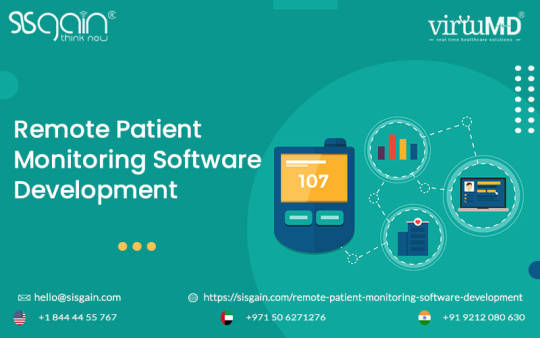
In recent years, remote patient monitoring (RPM) has emerged as a critical tool for healthcare providers and patients alike. This technology has enabled patients to receive high-quality care from the comfort of their own homes while allowing healthcare providers to monitor and manage patients' conditions remotely. As one of the leading remote patient monitoring companies in the industry, Sisgain is at the forefront of this technology, providing innovative remote patient monitoring devices and patient management software. In this blog post, we will explore the benefits of remote patient monitoring and how Sisgain's solutions are helping to revolutionize the healthcare industry.
Improved Patient Outcomes
One of the most significant benefits of remote patient monitoring is its ability to improve patient outcomes. RPM devices can provide real-time data on patients' health metrics, allowing healthcare providers to identify any potential health problems before they become more severe. This information can help healthcare providers make more informed decisions about patient care, resulting in better health outcomes for patients. Additionally, RPM can help patients take more control of their health by allowing them to track their own health metrics and make more informed decisions about their health.
Reduced Healthcare Costs
Remote patient monitoring can also help reduce healthcare costs by minimizing the need for in-person visits to healthcare providers. This is particularly beneficial for patients with chronic conditions who require frequent monitoring and management. By using RPM devices, healthcare providers can monitor patients' health remotely and intervene as necessary, reducing the need for in-person visits and potentially costly hospitalizations.
Increased Patient Satisfaction
RPM can also lead to increased patient satisfaction. Patients can receive high-quality care from the comfort of their own homes, reducing the inconvenience and expense of traveling to healthcare facilities. Additionally, RPM devices can provide patients with more control over their health, which can lead to increased satisfaction and engagement with their care.
Sisgain's Remote Patient Monitoring Solutions
As one of the leading remote patient monitoring companies, Sisgain is committed to providing innovative solutions that improve patient outcomes, reduce healthcare costs, and increase patient satisfaction. Sisgain offers a range of remote patient monitoring devices and patient management software that enable healthcare providers to monitor and manage patients' conditions remotely.
One of Sisgain's most popular remote patient monitoring devices is its wearable device, which can track patients' health metrics, including heart rate, blood pressure, and oxygen levels. This device can provide real-time data to healthcare providers, allowing them to monitor patients' conditions remotely and intervene as necessary. Sisgain's wearable device is also lightweight and comfortable, making it easy for patients to wear and use.
Sisgain also offers patient management software that can help healthcare providers monitor and manage patients' conditions remotely. This software can provide healthcare providers with real-time data on patients' health metrics, allowing them to make more informed decisions about patient care. Additionally, Sisgain's patient management software can help healthcare providers schedule appointments, communicate with patients, and track patient progress, making it easier to manage patients' care remotely.
Conclusion
Remote patient monitoring is revolutionizing the healthcare industry, providing patients with high-quality care from the comfort of their own homes while allowing healthcare providers to monitor and manage patients' conditions remotely. As one of the leading remote patient monitoring companies in the industry, Sisgain is at the forefront of this technology, providing innovative remote patient monitoring devices and patient management software. With Sisgain's solutions, healthcare providers can improve patient outcomes, reduce healthcare costs, and increase patient satisfaction, making it easier to provide high-quality care to patients with chronic conditions.
#remote patient monitoring#remote patient monitoring companies#remote patient monitoring devices#patient management software
0 notes
Text
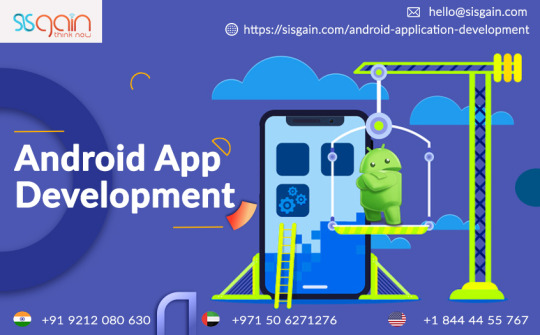
Top Android Application Development Company | Best Android App Development Agency
#android app development#android developers#android application development#android app development agency
0 notes
Text
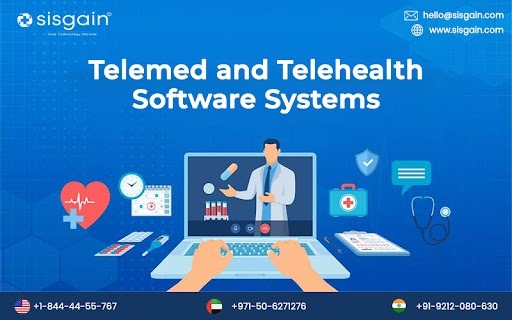
Telehealth Software & Solution Development Company
#telehealth development company#telehealth Software technology#telehealth Development services#telehealth software#telehealth Development platform#custom telehealth solutions#remote monitoring telehealth software#telehealth implementation development#telehealth software systems#telehealth app developers#telehealth app development company#telehealth app
0 notes
Text
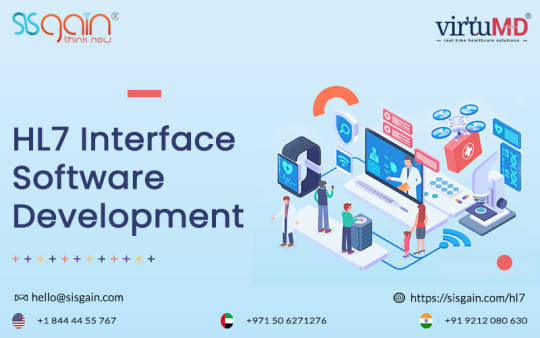
HL7 Interface Development - SISGAIN
#hl7 interface#hl7 integration#hl7 development#hl7 interface software#hl7 interface development#hl7 interface developer#hl7 systems
0 notes
Text
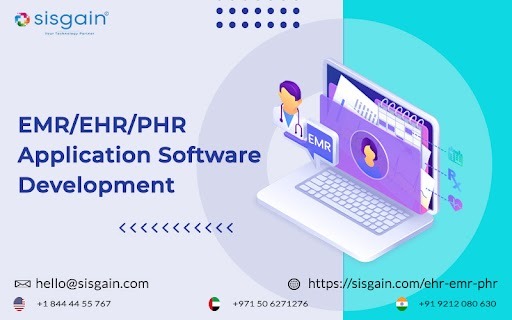
EHR Integrations Company
#emr integrations services#emr software development#ehr software development#ehr integration development services#electronic medical records development#electronic health records development#phr software development#phr integrations
0 notes
Text
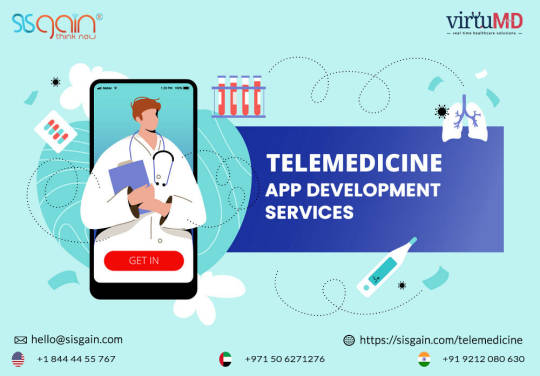
Telemedicine Software Development Company | SISGAIN
0 notes